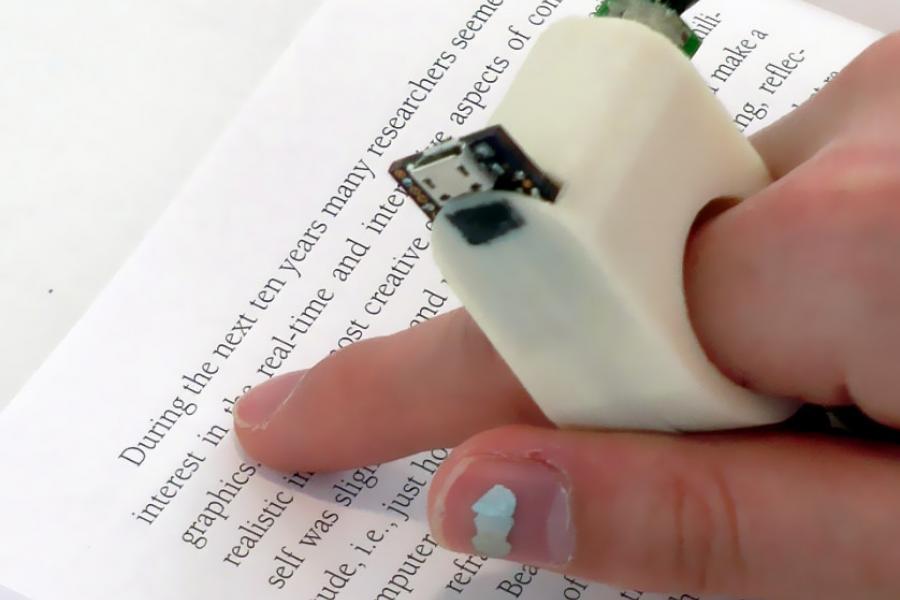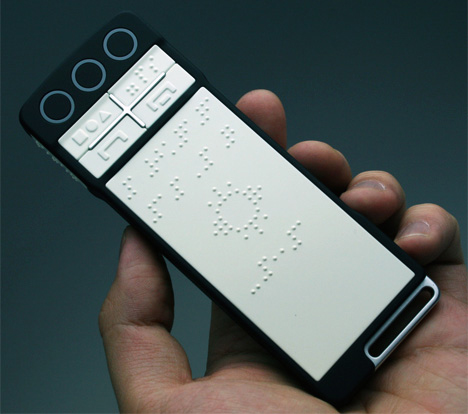Speech-to-Text Devices for Low Vision: Enhancing Ease of Use
Speech-to-Text Devices for Low Vision: Enhancing Ease of Use
Blog Article
Discover Ingenious Devices Created for the Visually Impaired
The growth of ingenious tools for the aesthetically impaired stands for a significant improvement in accessibility and self-reliance. Technologies such as smart glasses with AI abilities and mobile applications developed to give auditory summaries are improving daily experiences for individuals. In addition, wearable devices that utilize haptic responses enhance ecological recognition, while modern Braille advancements offer brand-new ways to engage with message. As these devices remain to develop, their effect on the lives of those with visual disabilities increases essential inquiries regarding the future of inclusivity and freedom in numerous aspects of life. What lies ahead in this technological landscape?
Smart Glasses for Navigation

Smart glasses created for navigating are reinventing the method visually damaged individuals communicate with their environment. These innovative gadgets utilize a mix of cam innovation, synthetic knowledge, and acoustic feedback to give real-time info about environments. By utilizing challenge detection systems, clever glasses can signal individuals to possible dangers, enabling more secure wheelchair in both familiar and unknown settings.
The combination of GPS technology additionally enhances navigating capabilities, permitting individuals to obtain auditory directions as they relocate. This hands-free method not just promotes freedom however additionally empowers aesthetically damaged people to navigate metropolitan landscapes with increased self-confidence. In addition, lots of clever glasses are furnished with features that determine landmarks and street indicators, offering contextual details that enhances the individual experience.
In addition, the development of these gadgets is continually progressing, with firms working to improve the accuracy of item recognition and increase the series of navigational attributes. As clever glasses end up being more cost effective and easily accessible, they hold the potential to dramatically transform life for aesthetically damaged users. Ultimately, these innovative devices represent a vital action toward inclusivity, offering improved flexibility and a better sense of autonomy for individuals navigating the globe around them.

Mobile Application for Daily Living
Exactly how can mobile applications boost the lives of aesthetically damaged individuals? Mobile applications are transforming the method visually impaired individuals navigate their environments, take care of everyday tasks, and access details. These applications supply vital assistance with various functionalities, cultivating self-reliance and improving lifestyle.
A number of innovative mobile apps are made particularly for daily living. For example, apps like Be My Eyes connect aesthetically impaired customers with sighted volunteers through video clip phone calls, allowing them to obtain real-time support with jobs such as checking out tags or navigating strange areas. Seeing AI, established by Microsoft, makes use of synthetic knowledge to define surroundings, checked out message, and identify things, effectively transforming a mobile phone right into a powerful tool for everyday aid.
Additionally, navigation applications tailored for the visually impaired, such as Aira and BlindSquare, use audio-based instructions and environmental information, allowing customers to traverse their surroundings securely and with confidence. Past navigating and immediate support, mobile apps additionally sustain company and job monitoring, with features that help users establish pointers, produce order of business, and track appointments. In recap, mobile applications function as indispensable resources, equipping visually impaired individuals to lead more independent and satisfying lives.
Wearable Technologies for Help
Empowerment with modern technology is significantly noticeable in the world of wearable tools made to aid aesthetically damaged people. These innovative tools incorporate Braille displays and notetakers seamlessly into day-to-day life, boosting navigating and supplying necessary responses to customers. Smart glasses equipped with cameras can check out and recognize faces message out loud, allowing users to connect even more confidently in social and professional setups.
Another significant advancement is making use of haptic responses systems in wearable gadgets. These systems use vibrations or various other tactile signals to convey details regarding the user's atmosphere, such as barriers or changes in terrain, boosting movement and security. Wearable modern technologies likewise include wristbands that attach to mobile phones, alerting customers to notifications via subtle resonances, therefore enhancing connection without reliance on aesthetic cues.
As these modern technologies continue to advance, they are not only boosting independence for aesthetically impaired people but additionally fostering a better sense of addition in society. By linking the void in between challenges encountered in daily living and the possibility for autonomy, wearable innovations function as essential devices in the mission for equal rights and empowerment for those with visual disabilities.
Sound Description Devices
Sound description tools play a crucial duty in boosting availability for aesthetically impaired people, providing them with the capability to involve with aesthetic media. AI-powered visual aids. These tools use narrated summaries of key aesthetic components in movies, television shows, and live performances, making sure that users can fully understand the context and emotions conveyed with visuals
Sound summary can be integrated right into various systems, consisting of streaming services, cinema screenings, and live cinema. Several popular streaming services currently include audio description as an availability attribute, allowing audiences to choose it quickly. Along with conventional media, specialized applications additionally exist, giving audio descriptions for art events, galleries, and various other social occasions.
The performance of audio summary pivots on the ability of the storytellers, that must convey visual details succinctly without interfering with the initial sound. Advancements in this area are likewise leading the way for more personalized experiences, where customers can change the level of detail and pacing according to their preferences.
Braille Innovations and Gadgets
Braille tools and advancements have dramatically transformed the way visually damaged people connect with text and information. Modern developments have led to the advancement of functional devices that boost literacy and independence among users.
Furthermore, portable Braille notetakers integrate typical Braille input with modern functionalities, facilitating note-taking, scheduling, and file modifying on the go. AI-powered visual aids. These small gadgets typically include text-to-speech abilities, connecting the gap in between Braille and acoustic details
In addition, ingenious Braille printers have emerged, allowing customers to generate Braille tags, files, and instructional products efficiently. This access cultivates higher involvement in educational and professional atmospheres, ultimately advertising inclusivity.
Moreover, research study into clever Braille innovations continues to increase. Gadgets that incorporate synthetic knowledge are being checked out to offer real-time navigating assistance and contextual info, boosting the customer experience in varied settings. On the whole, these advancements reflect a dedication to empowering aesthetically impaired people with technology, guaranteeing they can conveniently gain access to and involve with the globe around them.

Final Thought
The advancement of ingenious devices for the aesthetically damaged significantly improves freedom and quality of life. Smart glasses, mobile applications, wearable innovations, audio summary devices, and Braille technologies collectively encourage people by offering vital navigating assistance, environmental understanding, and enhanced analysis experiences. These modern technologies not just foster better inclusion but also promote autonomy in everyday tasks, inevitably adding to a more equitable and accessible society for visually impaired individuals. Continued development in this field holds guarantee for further enhancements.
As clever glasses come to be a lot more budget friendly and obtainable, they hold the prospective to considerably transform everyday life for visually damaged individuals. Mobile apps are revolutionizing the means aesthetically damaged individuals navigate their environments, take care of everyday tasks, and access details. Apps like Be My Eyes connect aesthetically impaired customers with sighted volunteers by means of video telephone calls, enabling them to receive real-time help with tasks such as reviewing tags or navigating strange spaces.In addition, navigation applications customized for the visually damaged, such as Aira and BlindSquare, offer audio-based instructions and environmental details, allowing customers to traverse their surroundings securely and confidently.The advancement of ingenious tools for the aesthetically damaged substantially enhances self-reliance and high quality of life.
Report this page